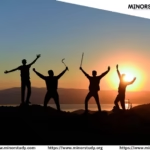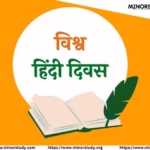🧠 Introduction: The Urgency Behind National Human Trafficking Awareness Day
National Human Trafficking Awareness Day, observed every January 11, serves as a powerful reminder of one of the world’s most disturbing yet hidden crimes—human trafficking. Despite global advancement, millions are still enslaved—trafficked for sex, labor, organs, and more. This day urges the world to rise in unison, recognize the signs, educate the masses, and rescue those in need.
- 🧠 Introduction: The Urgency Behind National Human Trafficking Awareness Day
- 📜 History of National Human Trafficking Awareness Day
- 🗓️ Timeline of Human Trafficking Awareness
- ⚖️ 7 Dark Facts About Human Trafficking
- ❓ Frequently Asked Questions (FAQs)
- 1. What is Human Trafficking?
- 2. Is human trafficking the same as smuggling?
- 3. Who is most at risk?
- 4. What is the purpose of National Human Trafficking Awareness Day?
- 5. How can I observe the day?
- 🧭 Significance of the Day
- 🎯 How It Affects Daily Life
- 👁️🗨️ How to Observe and Spread Awareness
- 🎉 Wishing on National Human Trafficking Awareness Day
- ✅ Important Takeaways
- 🌍 Why It’s Important to Society
- 🧩 Conclusion: Choose Action Over Apathy
Human trafficking isn’t a distant issue. It could be happening in your neighborhood, yet remain invisible. Raising awareness is not optional—it’s urgent.
📜 History of National Human Trafficking Awareness Day
2000 – The Trafficking Victims Protection Act (TVPA) was signed in the U.S., a landmark law for anti-trafficking efforts.
2007 – The Blue Campaign was launched by the U.S. Department of Homeland Security.
2008 – The U.S. Senate designated January 11 as National Human Trafficking Awareness Day to shine a light on modern slavery.
2010 onwards – President Obama declared January as National Slavery and Human Trafficking Prevention Month.
This day exists because silence allows traffickers to thrive. The observance is a call to learn, share, act, and most importantly, prevent.
🗓️ Timeline of Human Trafficking Awareness
| Year | Event |
|---|---|
| 1865 | Slavery abolished in the U.S. (13th Amendment), but trafficking never ceased. |
| 2000 | Trafficking Victims Protection Act signed. |
| 2007 | Launch of the Blue Campaign by DHS. |
| 2008 | First National Human Trafficking Awareness Day. |
| 2010 | January recognized as National Slavery and Human Trafficking Prevention Month. |
| 2020 | Online trafficking cases surged during COVID-19 pandemic. |
| 2024 | Focus expanded on labor trafficking and online grooming. |
⚖️ 7 Dark Facts About Human Trafficking
Over 50 million people are trafficked globally (ILO, 2022).
Every 30 seconds, someone becomes a trafficking victim.
It’s a $150 billion criminal industry.
80% of victims are women and children.
Human trafficking occurs in all 50 U.S. states and in every country globally.
Many victims are trafficked by family members or friends.
The rise of online platforms makes it easier than ever for traffickers to find victims.
❓ Frequently Asked Questions (FAQs)
1. What is Human Trafficking?
Human trafficking involves the use of force, fraud, or coercion to exploit people for labor, sex, or other purposes.
2. Is human trafficking the same as smuggling?
No. Smuggling involves consent and ends after arrival. Trafficking is ongoing exploitation.
3. Who is most at risk?
Children, women, refugees, LGBTQ+ individuals, and those in poverty or crises.
4. What is the purpose of National Human Trafficking Awareness Day?
To educate the public, spotlight survivor stories, and mobilize communities to detect, prevent, and report trafficking.
5. How can I observe the day?
Wear blue, the color of awareness.
Share resources online using hashtags like #EndHumanTrafficking.
Donate to or volunteer with anti-trafficking organizations.
Learn the signs of trafficking and how to report it.
🧭 Significance of the Day
National Human Trafficking Awareness Day is not just a calendar event—it’s a moral call to action. Here’s why it’s vital:
Raises awareness of a largely invisible crime.
Empowers communities with prevention tools.
Uplifts survivor voices and centers their healing.
Influences policymakers to enact stronger laws.
Educates the youth, where prevention begins.
In a world full of noise, this day amplifies the whispers of the voiceless.
🎯 How It Affects Daily Life
You might think: What does this have to do with me?
Here’s how everyone is connected:
Consumers unknowingly support trafficking via goods made by forced labor.
Social media exposes children to grooming by traffickers pretending to be friends.
Ride-share drivers, hotel workers, or teachers might unknowingly cross paths with victims.
Law enforcement or medical professionals often treat victims as criminals due to lack of training.
Learning the warning signs can save a life.
👁️🗨️ How to Observe and Spread Awareness
Wear Blue: Participate in the DHS Blue Campaign.
Host Events: Organize webinars, community talks, or film screenings.
Educate Youth: Teach online safety and self-protection.
Follow Organizations: Such as Polaris, A21, and IJM.
Support Survivors: Buy from survivor-led businesses and advocate for trauma-informed care.
Know the Hotline: In the U.S., the Human Trafficking Hotline is 1-888-373-7888.
🎉 Wishing on National Human Trafficking Awareness Day
Here are meaningful messages you can share:
✨ “May awareness bloom into action, and action bring freedom. Let’s end trafficking—together.”
✨ “Today we wear blue, but more importantly—we choose truth, compassion, and justice.”
✨ “To every survivor: your strength inspires a safer tomorrow.”
✅ Important Takeaways
Human trafficking is modern-day slavery.
January 11 is a day of education and action.
Everyone can be part of the solution—learn, speak, act.
Victims are often hidden in plain sight.
Awareness is the first step toward prevention.
🌍 Why It’s Important to Society
Human trafficking destroys lives, families, and communities. It:
Undermines human rights
Fuels organized crime
Exploits the vulnerable
Weakens societal trust
Creates multigenerational trauma
When we combat trafficking, we build a safer, more ethical world. Silence is complicity. Awareness is empowerment.
🧩 Conclusion: Choose Action Over Apathy
National Human Trafficking Awareness Day isn’t about symbolism. It’s about intervention. It’s about lighting the path for those in darkness—people trapped, exploited, and crying for help the world often doesn’t hear.
By understanding the issues, recognizing signs, supporting survivors, and spreading awareness, you become the shield they never had. Every voice matters. Every effort counts.
Let January 11 not be just another date. Let it be a rallying cry for justice, dignity, and freedom.









Good writing style